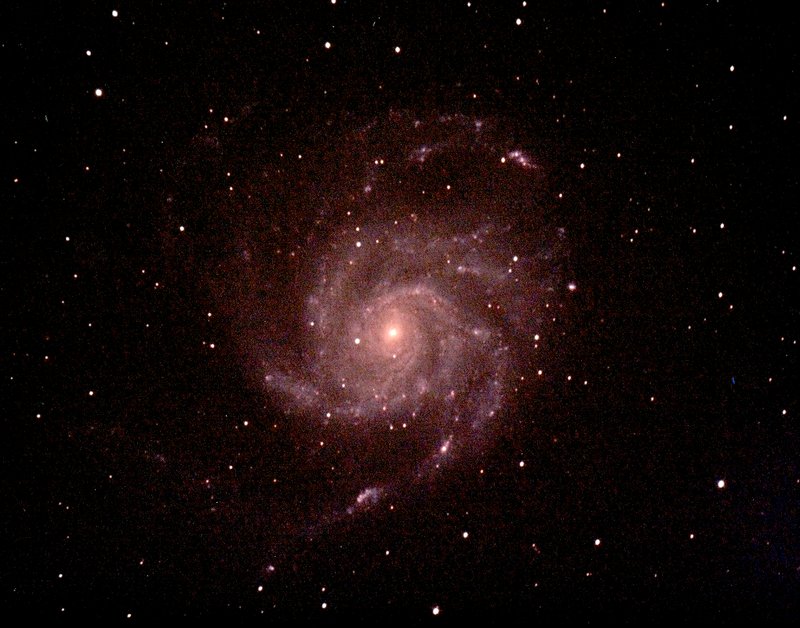July -- high summer! Some pretty good nights are happening. If you go out to look at the night sky in July, be sure and wear your insect repellent. There is a lot of standing water around and, of course, this is where mosquitoes breed. This is high mosquito season!
The Milky Way can easily be seen overhead if you have a dark sight. If you find it, you will be looking towards the center of our galaxy. In fact you will be seeing the back side of the next few arms "inward" from our position on a spur of the Sagittarius Arm. You will notice that as you look in a more southerly direction, the star count increases greatly until, when looking near the local horizon, the stars become indeed, like a milk stain. Our galaxy is lens-shaped and the more one looks towards the center of our galaxy, the more one is looking at the thick part of the lens. Looking in a more northerly direction, you will see that the Milky Way becomes slimmer--the star count goes down. This is because one is looking back along the thinner half of the lens and the stars are less densely distributed.
On a very dark night, you might see the Great Rift. This so-called Great Rift appears to cut the Milky Way in half through its length. In reality, our galaxy is not divided in half by the Great Rift -- the Great Rift is a band of dust and gas existing inward towards the center of the galaxy. This gas and dust is dense enough so that stars behind it cannot shine through. Since our galaxy spins on its axis over very long periods of time, the gas and dust are stretched out along the disk of the galaxy, making for what appears to be open, black space with no stars. The stars are there, we just can't see them through all the dust. The stars can be seen in some wave-lengths of light not visible to the naked eye.
Mighty Jupiter and bright Venus will be seen in the western sky, playing tag with the Moon across the month. Saturn, though dimmer than Jupiter and Venus, can be found in the southeast, about two fist widths above the horizon. The rings are about as fully open as we can ever see them, but Saturn is a bit low in the sky and this makes for more turbulence we have to see through to see any detail with a telescope.
As summer moves along, one can still see some bright galaxies exterior to our own. Most of them belong to the Coma-Virgo Cluster, containing about 4,500 galaxies of all types. I have decided to use some of my space this month to show some of the images I have made of a few of these galaxies; most of these images were made with the telescope owned by John Brown University, mounted at New Life Ranch. Some of these galaxies are relatively close by (approximately 12 million light years away), and some of them are more than 40 million light years distant. Hope you enjoy them.
Community on 07/01/2015
